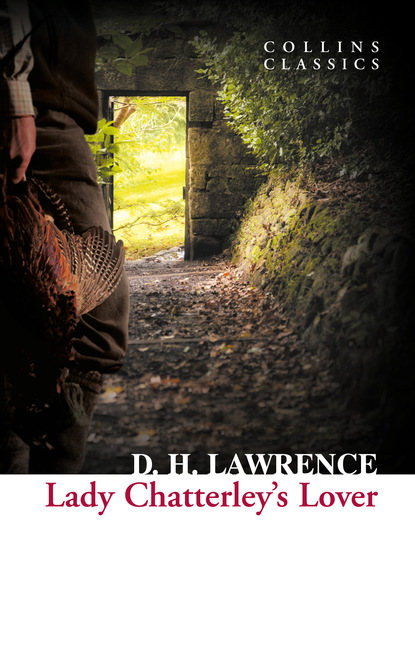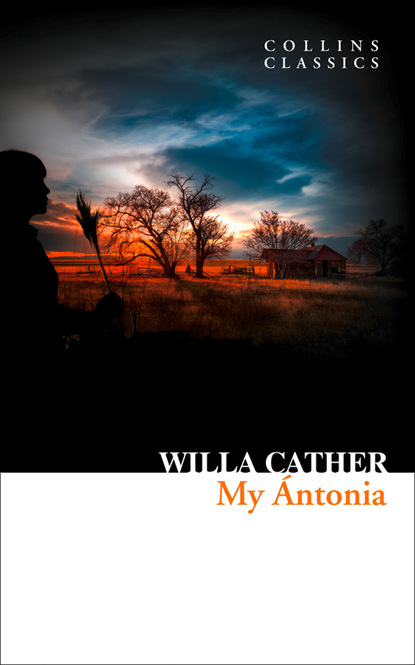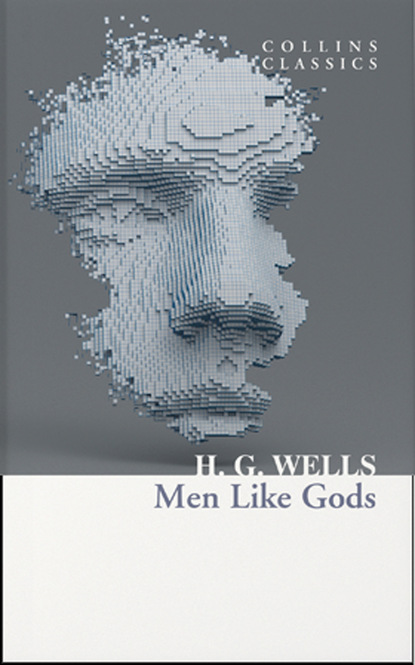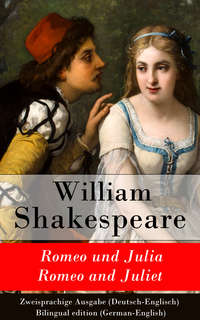
Полная версия
Macbeth

Prefatory Note
This Shakespeare play uses the full Alexander text. By keeping in mind the fact that the language has changed considerably in four hundred years, as have customs, jokes, and stage conventions, the editors have aimed at helping the modern reader – whether English is their mother tongue or not – to grasp the full significance of the play. The Notes, intended primarily for examination candidates, are presented in a simple, direct style. The needs of those unfamiliar with British culture have been specially considered.
Since quiet study of the printed word is unlikely to bring fully to life plays that were written directly for the public theatre, attention has been drawn to dramatic effects which are important in performance. The editors see Shakespeare’s plays as living works of art which can be enjoyed today on stage, film and television in many parts of the world.
Table of Contents
Cover Page
Title Page
Prefatory Note
The Theatre in Shakespeare’s Day
Shakespeare: A Timeline
Life & Times
Money in Shakespeare’s Day
INTRODUCTION
LIST OF CHARACTERS
ACT ONE
Scene I
Scene II
Scene III
Scene IV
Scene V
Scene VI
Scene VII
ACT TWO
Scene I
Scene II
Scene III
Scene IV
ACT THREE
Scene I
Scene II
Scene III
Scene IV
Scene V
Scene VI
ACT FOUR
Scene I
Scene II
Scene III
ACT FIVE
Scene I
Scene II
Scene III
Scene IV
Scene V
Scene VI
Scene VII
Scene VIII
SUMMING UP
THEME INDEX
Shakespeare: Words and Phrases
Copyright
About the Publisher
The Theatre in Shakespeare’s Day
On the face of it, the conditions in the Elizabethan theatre were not such as to encourage great writers. The public playhouse itself was not very different from an ordinary inn-yard; it was open to the weather; among the spectators were often louts, pickpockets and prostitutes; some of the actors played up to the rowdy elements in the audience by inserting their own jokes into the authors’ lines, while others spoke their words loudly but unfeelingly; the presentation was often rough and noisy, with fireworks to represent storms and battles, and a table and a few chairs to represent a tavern; there were no actresses, so boys took the parts of women, even such subtle and mature ones as Cleopatra and Lady Macbeth; there was rarely any scenery at all in the modern sense. In fact, a quick inspection of the English theatre in the reign of Elizabeth I by a time-traveller from the twentieth century might well produce only one positive reaction: the costumes were often elaborate and beautiful.
Shakespeare himself makes frequent comments in his plays about the limitations of the playhouse and the actors of his time, often apologizing for them. At the beginning of Henry V the Prologue refers to the stage as ‘this unworthy scaffold’ and to the theatre building (the Globe, probably) as ‘this wooden O, and emphasizes the urgent need for imagination in making up for all the deficiencies of presentation. In introducing Act IV the Chorus goes so far as to say:
…we shall much disgrace
With four or five most vile and ragged foils,
Right ill-dispos’d in brawl ridiculous, The name of Agincourt. (lines 49–52)
In A Midsummer Night’s Dream (Act V, Scene i) he seems to dismiss actors with the words:
The best in this kind are but shadows.
Yet Elizabeth’s theatre, with all its faults, stimulated dramatists to a variety of achievement that has never been equalled and, in Shakespeare, produced one of the greatest writers in history. In spite of all his grumbles he seems to have been fascinated by the challenge that it presented him with. It is necessary to re-examine his theatre carefully in order to understand how he was able to achieve so much with the materials he chose to use. What sort of place was the Elizabethan playhouse in reality? What sort of people were these criticized actors? And what sort of audiences gave them their living.
The Development of the Theatre up to Shakespeare’s Time
For centuries in England noblemen had employed groups of skilled people to entertain them when required. Under Tudor rule, as England became more secure and united, actors such as these were given more freedom, and they often performed in public, while still acknowledging their ‘overlords’ (in the 1570s, for example, when Shakespeare was still a schoolboy at Stratford, one famous company was called ‘Lord Leicester’s Men’). London was rapidly becoming larger and more important in the second half of the sixteenth century, and many of the companies of actors took the opportunities offered to establish themselves at inns on the main roads leading to the City (for example, the Boar’s Head in Whitechapel and the Tabard in South-wark) or in the City itself. These groups of actors would come to an agreement with the inn-keeper which would give them the use of the yard for their performances after people had eaten and drunk well in the middle of the day. Before long, some inns were taken over completely by companies of players and thus became the first public theatres. In 1574 the officials of the City of London issued an order which shows clearly that these theatres were both popular and also offensive to some respectable people, because the order complains about ‘the inordinate haunting of great multitudes of people, specially youth, to plays interludes and shows; namely occasion of frays and quarrels, evil practices of incontinency in great inns…’ There is evidence that, on public holidays, the theatres on the banks of the Thames were crowded with noisy apprentices and tradesmen, but it would be wrong to think that audiences were always undiscriminating and loudmouthed. In spite of the disapproval of Puritans and the more staid members of society, by the 1590s, when Shakespeare’s plays were beginning to be performed, audiences consisted of a good cross-section of English society, nobility as well as workers, intellectuals as well as simple people out for a laugh; also (and in this respect English theatres were unique in Europe), it was quite normal for respectable women to attend plays. So Shakespeare had to write plays which would appeal to people of widely different kinds. He had to provide ‘something for everyone’ but at the same time to take care to unify the material so that it would not seem to fall into separate pieces as they watched it. A speech like that of the drunken porter in Macbeth could provide the ‘groundlings’ with a belly-laugh, but also held a deeper significance for those who could appreciate it. The audience he wrote for was one of a number of apparent drawbacks which Shakespeare was able to turn to his and our advantage.
Shakespeare’s Actors
Nor were all the actors of the time mere ‘rogues, vagabonds and sturdy beggars’ as some were described in a Statute of 1572. It is true that many of them had a hard life and earned very little money, but leading actors could become partners in the ownership of the theatres in which they acted: Shakespeare was a shareholder in the Globe and the Blackfriars theatres when he was an actor as well as a playwright. In any case, the attacks made on Elizabethan actors were usually directed at their morals and not at their acting ability; it is clear that many of them must have been good at their trade if they were able to interpret complex works like the great tragedies in such a way as to attract enthusiastic audiences. Undoubtedly some of the boys took the women’s parts with skill and confidence, since a man called Coryate, visiting Venice in 1611, expressed surprise that women could act as well as they: ‘I saw women act, a thing that I never saw before…and they performed it with as good a grace, action, gesture…as ever I saw any masculine actor.’ The quality of most of the actors who first presented Shakespeare’s plays is probably accurately summed up by Fynes Moryson, who wrote, ‘…as there be, in my opinion, more plays in London than in all the parts of the world I have seen, so do these players or comedians excel all other in the world.’
The Structure of the Public Theatre
Although the ‘purpose-built’ theatres were based on the inn-yards which had been used for play-acting, most of them were circular. The walls contained galleries on three storeys from which the wealthier patrons watched, they must have been something like the ‘boxes’ in a modern theatre, except that they held much larger numbers – as many as 1500. The ‘groundlings’ stood on the floor of the building, facing a raised stage which projected from the ‘stage-wall’, the main features of which were:
1 a small room opening on to the back of the main stage and on the same level as it (rear stage),
2 a gallery above this inner stage (upper stage),
3 a canopy projecting from above the gallery over the main stage, to protect the actors from the weather (the 700 or 800 members of the audience who occupied the yard, or ‘pit’ as we call it today, had the sky above them).
In addition to these features there were dressing-rooms behind the stage and a space underneath it from which entrances could be made through trap-doors. All the acting areas – main stage, rear stage, upper stage and under stage – could be entered by actors directly from their dressing rooms, and all of them were used in productions of Shakespeare’s plays. For example, the inner stage, an almost cave-like structure, would have been where Ferdinand and Miranda are ‘discovered’ playing chess in the last act of The Tempest, while the upper stage was certainly the balcony from which Romeo climbs down in Act III of Romeo and Juliet.
It can be seen that such a building, simple but adaptable, was not really unsuited to the presentation of plays like Shakespeare’s. On the contrary, its simplicity guaranteed the minimum of distraction, while its shape and construction must have produced a sense of involvement on the part of the audience that modern producers would envy.
Other Resources of the Elizabethan Theatre
Although there were few attempts at scenery in the public theatre (painted backcloths were occasionally used in court performances), Shakespeare and his fellow playwrights were able to make use of a fair variety of ‘properties’, lists of such articles have survived: they include beds, tables, thrones, and also trees, walls, a gallows, a Trojan horse and a ‘Mouth of Hell’; in a list of properties belonging to the manager, Philip Henslowe, the curious item ‘two mossy banks’ appears. Possibly one of them was used for the
bank whereon the wild thyme blows, Where oxlips and the nodding violet grows
in A Midsummer Night’s Dream (Act II, Scene i). Once again, imagination must have been required of the audience.
Costumes were the one aspect of stage production in which trouble and expense were hardly ever spared to obtain a magnificent effect. Only occasionally did they attempt any historical accuracy (almost all Elizabethan productions were what we should call ‘modern-dress’ ones), but they were appropriate to the characters who wore them: kings were seen to be kings and beggars were similarly unmistakable. It is an odd fact that there was usually no attempt at illusion in the costuming: if a costume looked fine and rich it probably was. Indeed, some of the costumes were almost unbelievably expensive. Henslowe lent his company £19 to buy a cloak, and the Alleyn brothers, well-known actors, gave £20 for a ‘black velvet cloak, with sleeves embroidered all with silver and gold, lined with black satin striped with gold’.
With the one exception of the costumes, the ‘machinery’ of the playhouse was economical and uncomplicated rather than crude and rough, as we can see from this second and more leisurely look at it. This meant that playwrights were stimulated to produce the imaginative effects that they wanted from the language that they used. In the case of a really great writer like Shakespeare, when he had learned his trade in the theatre as an actor, it seems that he received quite enough assistance of a mechanical and structural kind without having irksome restrictions and conventions imposed on him; it is interesting to try to guess what he would have done with the highly complex apparatus of a modern television studio. We can see when we look back to his time that he used his instrument, the Elizabethan theatre, to the full, but placed his ultimate reliance on the communication between his imagination and that of his audience through the medium of words. It is, above all, his rich and wonderful use of language that must have made play-going at that time a memorable experience for people of widely different kinds. Fortunately, the deep satisfaction of appreciating and enjoying Shakespeare’s work can be ours also, if we are willing to overcome the language difficulty produced by the passing of time.
Shakespeare: A Timeline
Very little indeed is known about Shakespeare’s private life: the facts included here are almost the only indisputable ones. The dates of Shakespeare’s plays are those on which they were first produced.
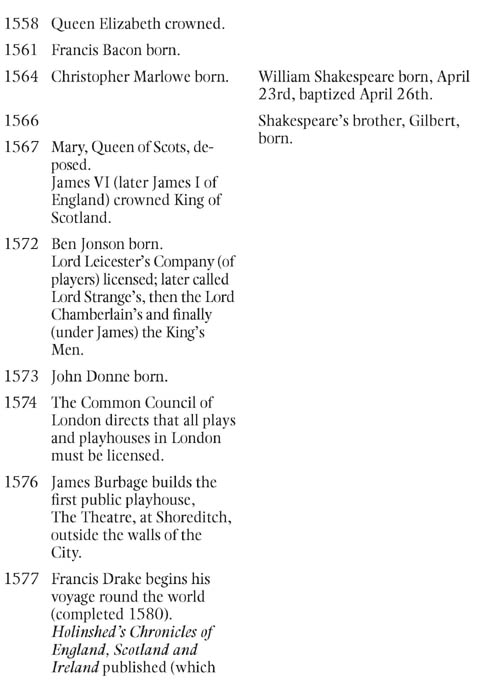

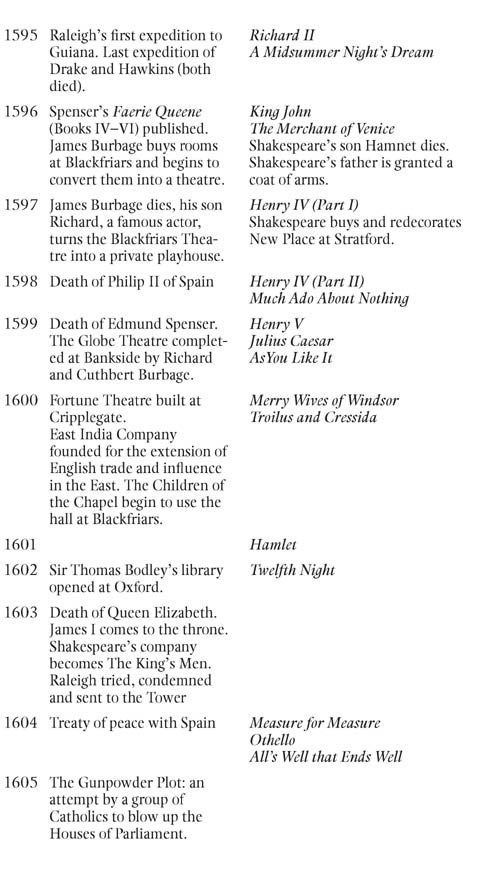
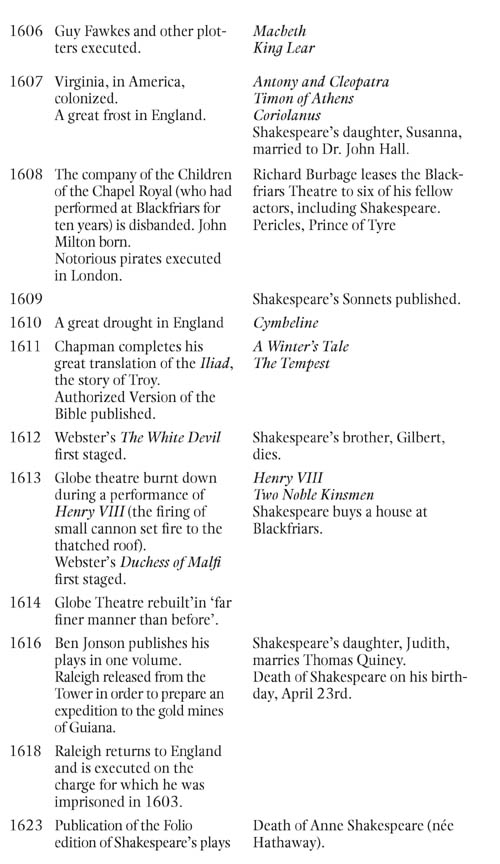
Life & Times
William Shakespeare the Playwright
There exists a curious paradox when it comes to the life of William Shakespeare. He easily has more words written about him than any other famous English writer, yet we know the least about him. This inevitably means that most of what is written about him is either fabrication or speculation. The reason why so little is known about Shakespeare is that he wasn’t a novelist or a historian or a man of letters. He was a playwright, and playwrights were considered fairly low on the social pecking order in Elizabethan society. Writing plays was about providing entertainment for the masses – the great unwashed. It was the equivalent to being a journalist for a tabloid newspaper.
In fact, we only know of Shakespeare’s work because two of his friends had the foresight to collect his plays together following his death and have them printed. The only reason they did so was apparently because they rated his talent and thought it would be a shame if his words were lost.
Consequently his body of work has ever since been assessed and reassessed as the greatest contribution to English literature. That is despite the fact that we know that different printers took it upon themselves to heavily edit the material they worked from. We also know that Elizabethan plays were worked and reworked frequently, so that they evolved over time until they were honed to perfection, which means that many different hands played their part in the active writing process. It would therefore be fair to say that any play attributed to Shakespeare is unlikely to contain a great deal of original input. Even the plots were based on well known historical events, so it would be hard to know what fragments of any Shakespeare play came from that single mind.
One might draw a comparison with the Christian bible, which remains such a compelling read because it came from the collaboration of many contributors and translators over centuries, who each adjusted the stories until they could no longer be improved. As virtually nothing is known of Shakespeare’s life and even less about his method of working, we shall never know the truth about his plays. They certainly contain some very elegant phrasing, clever plot devices and plenty of words never before seen in print, but as to whether Shakespeare invented them from a unique imagination or whether he simply took them from others around him is anyone’s guess.
The best bet seems to be that Shakespeare probably took the lead role in devising the original drafts of the plays, but was open to collaboration from any source when it came to developing them into workable scripts for effective performances. He would have had to work closely with his fellow actors in rehearsals, thereby finding out where to edit, abridge, alter, reword and so on.
In turn, similar adjustments would have occurred in his absence, so that definitive versions of his plays never really existed. In effect Shakespeare was only responsible for providing the framework of plays, upon which others took liberties over time. This wasn’t helped by the fact that the English language itself was not definitive at that time either. The consequence was that people took it upon themselves to spell words however they pleased or to completely change words and phrasing to suit their own preferences.
It is easy to see then, that Shakespeare’s plays were always going to have lives of their own, mutating and distorting in detail like Chinese whispers. The culture of creative preservation was simply not established in Elizabethan England. Creative ownership of Shakespeare’s plays was lost to him as soon as he released them into the consciousness of others. They saw nothing wrong with taking his ideas and running with them, because no one had ever suggested that one shouldn’t, and Shakespeare probably regarded his work in the same way. His plays weren’t sacrosanct works of art, they were templates for theatre folk to make their livings from, so they had every right to mould them into productions that drew in the crowds as effectively as possible. Shakespeare was like the helmsman of a sailing ship, steering the vessel but wholly reliant on the team work of his crew to arrive at the desired destination.
It seems that Shakespeare certainly had a natural gift, but the genius of his plays may be attributable to the collective efforts of Shakespeare and others. It is a rather satisfying notion to think that his plays might actually be the creative outpourings of the Elizabethan milieu in which Shakespeare immersed himself. That makes them important social documents as well as seminal works of the English language.
Visit www.AuthorTracker.com for exclusive information on your favorite HarperCollins author.
Money in Shakespeare’s Day
It is extremely difficult, if not impossible, to relate the value of money in our time to its value in another age and to compare prices of commodities today and in the past. Many items are simply not comparable on grounds of quality or serviceability.
There was a bewildering variety of coins in use in Elizabethan England. As nearly all English and European coins were gold or silver, they had intrinsic value apart from their official value. This meant that foreign coins circulated freely in England and were officially recognized, for example the French crown (écu) worth about 30p (72 cents), and the Spanish ducat worth about 33p (79 cents). The following table shows some of the coins mentioned by Shakespeare and their relation to one another.

A comparison of the following prices in Shakespeare’s time with the prices of the same items today will give some idea of the change in the value of money.
There was a bewildering variety of coins in use in Elizabethan England. As nearly all English and European coins were gold or silver, they had intrinsic value apart from their official value. This meant that foreign coins circulated freely in England and were officially recognized, for example the French crown (écu) worth about 30p (72 cents), and the Spanish ducat worth about 33p (79 cents). The following table shows some of the coins mentioned by Shakespeare and their relation to one another.
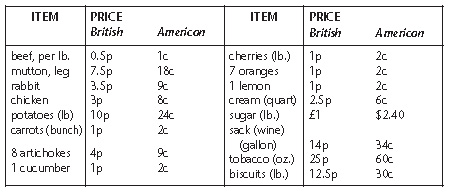
INTRODUCTION
Macbeth is a simple play. That is to say, the plot is straightforward, the characters clearly presented, the opposition of good and evil perfectly plain. There is not even much doubt, at any stage, about the ultimate fate of Macbeth and his wife. In fact, a heavy sense of inevitability hangs over all their actions. Nevertheless, where so much is obvious, there is still a great deal of mystery. Why does this sturdy soldier become a mean killer and, worse, a hirer of thugs to do his killing for him, particularly when he knows, and says, that his plans are sure to bring retribution upon him? Why does Lady Macbeth, an apparently loving wife, see it almost as a duty to drive herself and her husband into evil ways? And why do so many quite good men allow this vicious couple to gain total power and ruin the state of Scotland?
Some aspects of the Macbeth story have become horribly familiar in the course of the history of our own century. Several modem dictators have begun as brave soldiers and ended as crazy destroyers, so that the line between legitimate warfare and power-hungry violence has become very blurred indeed. Psychologists have shown us that, behind seemingly straightforward human motives, good or bad, there are often extremely complicated emotions and intentions. For these and other reasons this play, now nearly four hundred years old, based on the life of a man who lived six hundred years before Shakespeare himself, still exerts a great fascination on audiences and readers all over the world. In the summing-up at the end of this book an attempt will be made to analyse the reasons for this continued interest, and to go more deeply into the questions raised in this introduction. In the meantime, those new to the play may care to consider some of the intriguing ingredients of the play they are about to study, particularly those that are likely to be evident on first seeing or reading it.
The witches These three sinister creatures introduce the play, in a very brief first scene. They intend to meet with Macbeth, and they immediately convey an impression of impending horror. There is no clue to the nature of this horror, but we are uneasily aware of limitless possibilities. These agents of evil are at hand, ready to be consulted, ready to influence for the worse, for much of the play.
The good king King Duncan of Scotland soon appears, and impresses us with his integrity and generosity, as well as with his determination to do all he can for his kingdom’s welfare. He is, in the early stages, the representative of goodness, trust and benevolent order.


